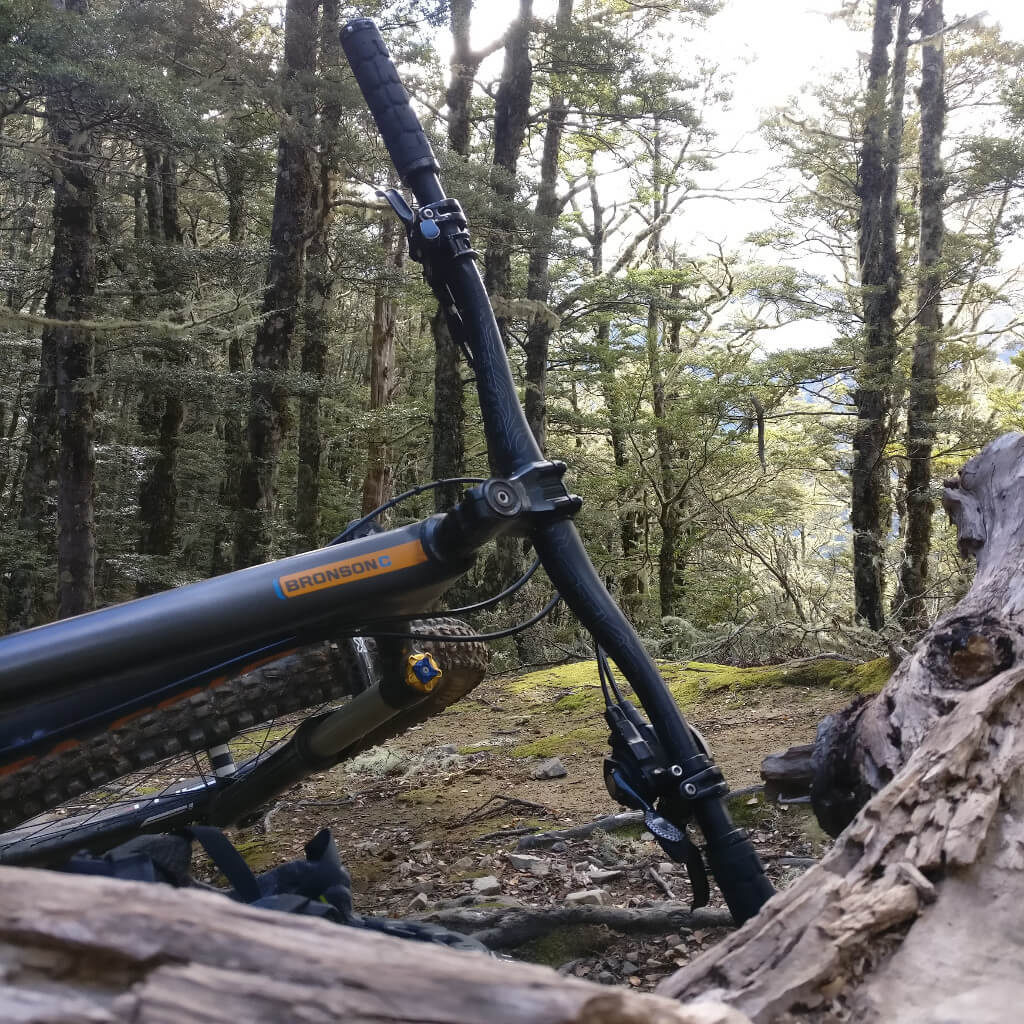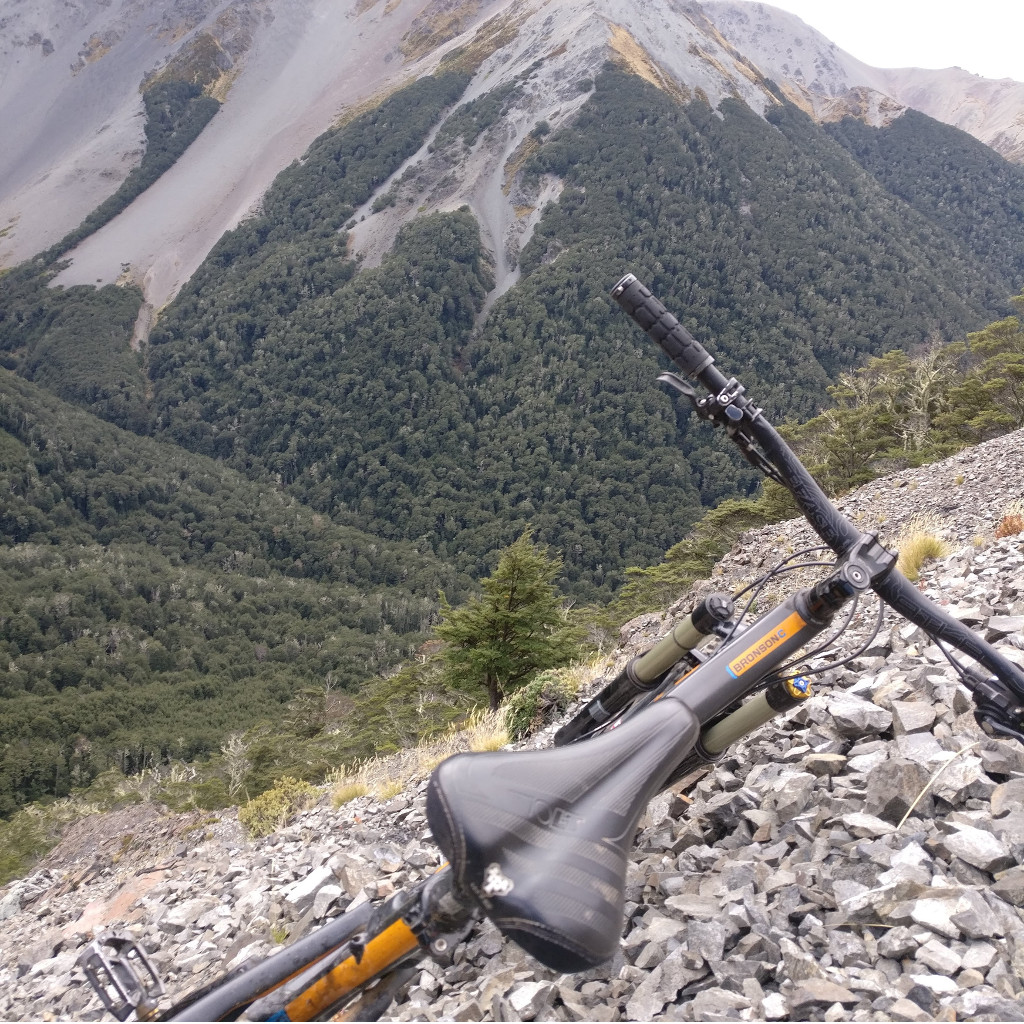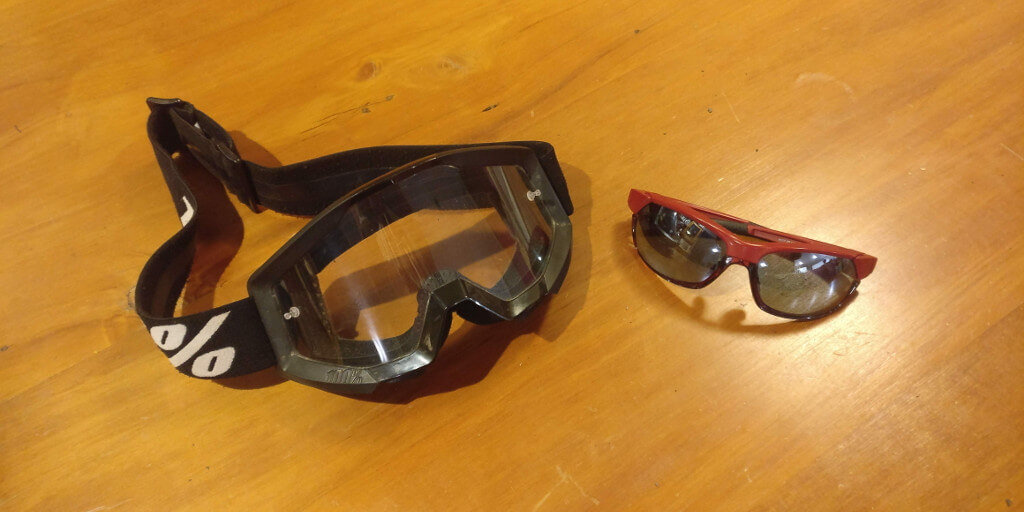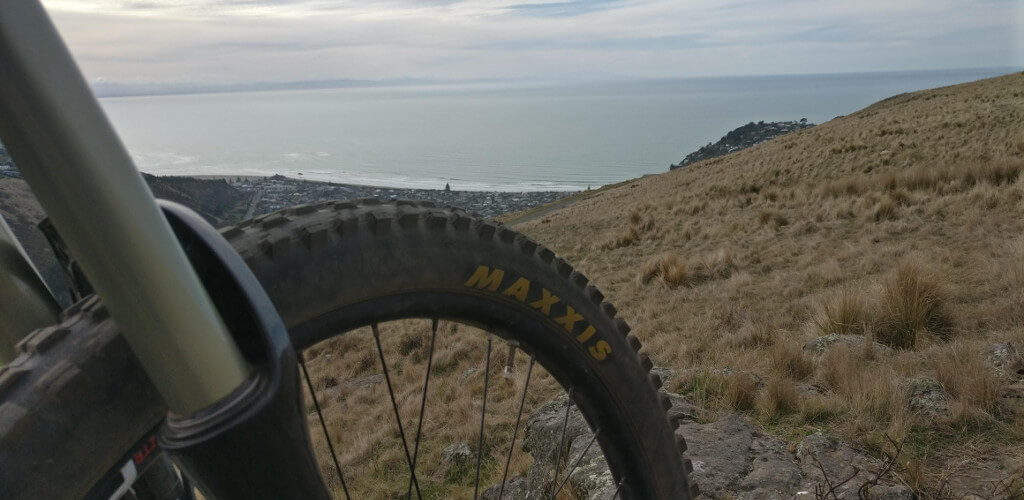Approximately 40% of the US population are short-sighted today, and it is a similar story across much of the rest of the World too.
It’s no surprise then that many people getting into mountain biking too have to consider how this will effect their experience of the sport.
First things first, you definitely need to be able to see well to mountain bike!
So that leaves wearing glasses or contact lenses as your two main choices if you’ve got bad eyesight.
In my opinion glasses are not well suited for a few reasons – they can jostle and jump around when you’re going over rough terrain at speed or landing jumps or other obstacles, and they also don’t offer much in the way of eye protection during a crash (or high speed encounter with foliage for example).
I’ve worn contact lenses for many years, and have been mountain biking for thousands of hours through all sorts of environments and conditions over that time too – so I should be able to shed some light on the topic for you.

The dangers:
There are a few main issues that crop up when wearing contact lenses when mountain biking…
Lack of eye protection
As with riding with no contacts or eyewear of any sort, your eyeballs are very exposed to the elements and potential damage – both of which can be dangerous.
Heading out into nature on a sunny day is awesome, but just like we need to cover up with sunscreen to prevent sunburn and all the bad things that stem from that, we also need to think about UV protective eyewear like sunglasses.
Without this, spending hours out in the harsh sun can (and does) damage your eyes over time.
But perhaps more obvious is the risk from flying stones, sticks, and protruding branches – bad enough to get hit in the face with, let alone an eye.
I actually used to be pretty nonchalont about taking any eyewear mountain biking, even when downhilling – and I recall the moment that changed for me.
I was flying down a trail on my downhill bike years ago, having a great time – when suddenly a thin branch hanging down into the trail (which I didn’t even see at speed) hit me directly in the left eye.
There was obviously an instant reflex to shut my eyes, and I slammed on the brakes stopping as fast as I could – but while doing so when I opened my eyes, that eye was still totally blurry!
It turned out that through some miracle, the branch had caught my contact lens, and dragged that out of my eye (somehow managing to avoid scratching the surface of my eyeball in the process), and flicked it off into the undergrowth somewhere.
I then had the precarious task of gingerly riding out of the trail network and off the hill while able to see out of one eye, and a very blurry world out of the other.
Not fun, but I was of course super thankful that I hadn’t just been blinded in one eye.
From that day on, protective eyewear was a must for me when I went riding.

Contact Lenses drying out
A very common issue riders will run into on the trail (or on the road for that matter), is the contacts drying out through the constant air rushing over them – particularly on hot dry summer days.
This can get pretty uncomfortable, depending on your type of lenses, and the harshness of the environment – and of course your threshold for eye irritation annoyance!
Lose a lens
Back to my experience of having one of my contact lenses torn out by a branch at high speed, there are a bunch of situations that could result in this happening out on the trail mid-adventure.
If you have only very slightly degraded eyesight it is probably not going to be the end of the world, but if you have bad eyesight, the different levels of vision from each eye as you try to continue on your ride can be very unpleasant (and crank up the danger factor as a result of losing your stereo vision).
Grit
And then there is the grit.
Fellow cycle commuters will be well aware of this little beauty too.
Without eye protection, it is just a matter of time until a little bit (or a lot) of muddy or dusty grit is flung at high velocity into your eye.
Naturally this is likely to occur at the least opportune moment, as you’ve navigating some treacherous part of the trail, or flying at high speed down some gnarly descent – right when you are relying on every last detail from your vision to keep you rubber side down.
If you survive that moment, then you’ve got the fun task of trying to clean that grit from your eye with your grimy mountain biker hands, or maybe a crusty old water bottle.

So what’s the solution? (no pun intended)
Sunglasses or Goggles
Whatever your choice of protective eyewear, a good set of sunglasses or mountain biking goggles are going to be a big upgrade from nothing!
Stones, branches, mud, and whatever other flying debris or damaging objects are far more likely to be deflected away from your eyes during riding, or during a crash.
Likewise, the annoyance of grit is going to be (mostly) a thing of the past.
You’re also immediately vastly reducing the amount of rushing airflow on your eyeballs (especially with goggles), and your eyes and lenses are going to stay much more comfortable for longer.
You’re also blocking UV, so don’t have to worry about burning your precious eyeballs, or getting eye cancer.
And as for losing a lens – you should get some sort of award if you manage to lose a contact lens while riding with goggles or sunglasses.
Personally for trail riding I run a set of Smith sunglasses with interchangeable lenses (tinted, clear etc) so I can swap them out depending on the light conditions I’m riding in.
For downhill / bikepark I run a set of 100% MTB goggles which are just great at stopping pretty much everything, and when combined with a fullface helmet definitely help keep your face and head better protected in general.
Spare set of lenses
One thing I do when going out on epic mountain biking trips into the, well, mountains is to take a spare set of contact lenses in my pack.
Even if it is much less likely that I’ll lose a lens while I’m wearing sunglasses, I just would hate for an awesome adventure to be spoiled by such an event – and they weigh precisely nothing to carry as a safeguard against that.
Eyedrops?
Another option could be to carry some eyedrops or other eye-soothing solution in the pack, in case of contact lens distress – whether caused by heat/wind, or grit. I’ve never done this myself, but I wouldn’t be surprised if some riders do carry a mini bottle with them for such a situation.
Fresh lenses more often
One change I have made over the years, as I’ve been out mountain biking countless times, and been commuting on my hardtail for many years, is to just swap out my lenses for fresh ones more often than I used to.
Contacts just do end up getting more weatherbeaten on a mountain biker than they would if your hobby was an indoor pursuit like video gaming for example.
I find that swapping out my lenses more regularly just helps keep my eyes feeling more comfortable, and lets me get back to enjoying shredding trails.

